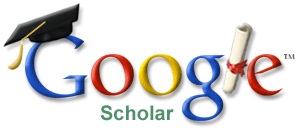How Does Consumer Experience with Cosmetics Products Create EWOM, Satisfaction, and Loyalty?
Abstract
Research aims: This study investigates how consumer experience with local beauty products influences Electronic Word of Mouth (EWOM), satisfaction, and loyalty.
Design/Methodology/Approach: The researchers employed a quantitative approach with an explanatory survey design. The setting was a local medium, low-end beauty product in Indonesia that competes with many global brands. The respondents were 160 women who recently purchased, used the brand, and performed EWOM. The researchers used online questionnaires to collect data distributed via Google forms. The proposed hypotheses were then tested using Structural Equation Modeling (SEM) with the AMOS version 22.0 application.
Research findings: This study found that (1) experiential marketing had a positive impact on customer satisfaction, EWOM, and customer loyalty; (2) customer satisfaction and EWOM also positively impacted customer loyalty; (3) while customer satisfaction mediated the effect of experiential marketing on customer loyalty, (4) EWOM mediated the experiential marketing effect on customer loyalty.
Theoretical contribution/Originality: This study improved people’s understanding of the importance of creating costumers experience, which contributed to their satisfaction and willingness to perform EWOM, despite its direct influence on customer loyalty. This study also gives insight into customer satisfaction and willingness to perform EWOM, which will shape their loyalty to the product. The researchers further highlight the existence of customer satisfaction and EWOM in forming customer loyalty since those two constructs significantly mediate the relationship between experiential marketing and customer loyalty.
Practitioner/Policy implication: The marketer needs to create a good customer experience, shaping customers’ satisfaction and influencing them to perform Electronic Word of Mouth. Furthermore, satisfied customers and those who already make an EWOM will create customer loyalty.
Research limitation/Implication: The researchers identified three limitations and proposed suggestions for future study. First, the researchers used limited respondents, which may influence the generalization of this research’s findings. Increasing the sample size may improve the research findings' generalizability. Second, most respondents' backgrounds were also limited to university students, while getting more varied respondents may give different results. Finally, since the researchers only considered four variables in this research model, the researchers proposed that future research should consider additional variables to explain this phenomenon better.
Keywords
Full Text:
PDFReferences
Adjei, M. T., Noble, S. M., & Noble, C. H. (2009). The influence of C2C communications in online brand communities on customer purchase behavior. Journal of the Academy of Marketing Science, 38(5), 634–653. https://doi.org/10.1007/s11747-009-0178-5
Alkilani, K., Ling, K. C., & Abzakh, A. A. (2012). The Impact of Experiential Marketing and Customer Satisfaction on Customer Commitment in the World of Social Networks. Asian Social Science, 9(1), 262-270. https://doi.org/10.5539/ass.v9n1p262
Almohaimmeed, B. (2020). The impacts of brand experiences on customer satisfaction and electronic word of mouth. Business: Theory and Practice, 21(2), 695–703. https://doi.org/10.3846/btp.2020.11965
Al-Msallam, S. (2015). Customer Satisfaction and Brand Loyalty in the Hotel Industry. International Journal of Management Sciences and Business Research 4(9), 1–13.
Araci, U. E., Bulut, Z. A., & Kocak, N. (2017). The Relation Among Experiential Marketing, Customer Satisfaction, and Behavioral Intention: a Study on Food and Beverage Businesses. Economic and Social Development, 23rd International Scientific Conference on Economic and Social Development, 23(63), 361–371.
Arndt, J. (1967). Role of Product-Related Conversations in the Diffusion of a New Product. Journal of Marketing Research, 4(3), 291–295. https://doi.org/10.2307/3149462
Bickart, B., & Schindler, R. M. (2001). Internet forums as influential sources of consumer information. Journal of Interactive Marketing, 15(3), 31–40. https://doi.org/10.1002/dir.1014
BPS - Statistics Indonesia. (2022). Exports in August 2022 reached US$27.91 billion & Imports in August 2022 reached US$22.15 billion. Retrieved from https://www.bps.go.id/pressrelease/2022/09/15/1925/ekspor-agustus-2022-mencapai-us-27-91-miliar--naik-9-17-persen-dibanding-juli-2022-dan-impor-agustus-2022-senilai-us-22-15-miliar--naik-3-77-persen-dibanding-juli-2022.html
Chang, W.-J. (2020). Experiential marketing, brand image and brand loyalty: a case study of Starbucks. British Food Journal, 123(1), 209–223. https://doi.org/10.1108/bfj-01-2020-0014
Cheung, C. M. K., & Lee, M. K. O. (2012). What drives consumers to spread electronic word of mouth in online consumer-opinion platforms. Decision Support Systems, 53(1), 218–225. https://doi.org/10.1016/j.dss.2012.01.015
Dhillon, R., Agarwal, B., & Rajput, N. (2021). Determining the impact of experiential marketing on consumer satisfaction: A case of India’s luxury cosmetic industry. Innovative Marketing, 17(4), 62–74. https://doi.org/10.21511/im.17(4).2021.06
Ghozali, I. (2017). Model Persamaan Struktural Konsep dan Aplikasi dengan Program Amos 24 Update Bayesian SEM. Semarang: Penerbit Universitas Diponegoro Semarang.
Godes, D., & Mayzlin, D. (2004). Using Online Conversations to Study Word-of-Mouth Communication. Marketing Science, 23(4), 545–560. https://doi.org/10.1287/mksc.1040.0071
Hadiwidjaja, R. S., & Dharmayanti, D. (2014). Analisa Hubungan Experiential Marketing, Kepuasan Pelanggan, Loyalitas Pelanggan Starbucks Coffee Di Surabaya Town Square. Jurnal Strategi Pemasaran 2(2), 1-11. Retrieved from https://publication.petra.ac.id/index.php/manajemen-pemasaran/article/view/2860
Hennig-Thurau, T., Gwinner, K. P., Walsh, G., & Gremler, D. D. (2004). Electronic word-of-mouth via consumer-opinion platforms: What motivates consumers to articulate themselves on the Internet? Journal of Interactive Marketing, 18(1), 38–52. https://doi.org/10.1002/dir.10073
Herr, P. M., Kardes, F. R., & Kim, J. (1991). Effects of Word-of-Mouth and Product-Attribute Information on Persuasion: An Accessibility-Diagnosticity Perspective. Journal of Consumer Research, 17(4), 454. https://doi.org/10.1086/208570
Hutama, A. C., & Dharmayanti, D. (2013). Pengaruh Experiential Marketing Terhadap Customer Satisfaction dan Customer Loyalty The Light Cup di Surabaya Town Square. Jurnal Strategi Pemasaran, 1(2), 1-13. Retrieved from https://publication.petra.ac.id/index.php/manajemen-pemasaran/article/view/880
Jalilvand, M. R., & Samiei, N. (2012). The effect of electronic word of mouth on brand image and purchase intention. Marketing Intelligence & Planning, 30(4), 460–476. https://doi.org/10.1108/02634501211231946
Jeong, E., & Jang, S. (Shawn). (2011). Restaurant experiences triggering positive electronic word-of-mouth (eWOM) motivations. International Journal of Hospitality Management, 30(2), 356–366. https://doi.org/10.1016/j.ijhm.2010.08.005
Johnston, R., & Kong, X. (2011). The customer experience: a road-map for improvement. Managing Service Quality: An International Journal, 21(1), 5–24. https://doi.org/10.1108/09604521111100225
Kartajaya, H., & Darwin, W. (2010). Connect! Surfing New Wave Marketing. Jakarta: PT. Gramedia Pustaka Utama.
King, C. W., & Summers, J. O. (1970). Overlap of Opinion Leadership across Consumer Product Categories. Journal of Marketing Research, 7(1), 43–50. https://doi.org/10.2307/3149505
Koetz, C. (2019). Managing the customer experience: a beauty retailer deploys all tactics. Journal of Business Strategy, 40(1), 10–17. https://doi.org/10.1108/jbs-09-2017-0139
Kotler, P., & Keller, K. L. (2015). Marketing management (15th Edition/Global Edition). Essex: Pearson.
Lee, M., Hsiao, H., & Yang, M. (2010). The study of the relationships among experiential marketing, service quality, customer satisfaction and customer loyalty. International Journal of Organizational Innovation (Online), 3(2), 352-378. Retrieved from https://www.proquest.com/scholarly-journals/study-relationships-among-experiential-marketing/docview/763161475/se-2
Lewis, R. C., & Chambers, R. E. (2000). Marketing Leadership in Hospitality. 3rd Edition. New York: Wiley.
Lin, T. L. (2012). The Spark Wven Integrated Marketing Communicatios Meets WOM Marketing and Experience Marketing. New York Journal. 5(5), 70-85.
Litvin, S. W., Goldsmith, R. E., & Pan, B. (2008). Electronic word-of-mouth in hospitality and tourism management. Tourism Management, 29(3), 458–468. https://doi.org/10.1016/j.tourman.2007.05.011
Lovelock, Christopher H., and Jochen Wirtz. 2010. “Services Marketing - People, Technology, Strategy.” in Harvard Business Review.
MacKenzie, S. B., & Lutz, R. J. (1989). An Empirical Examination of the Structural Antecedents of Attitude toward the Ad in an Advertising Pretesting Context. Journal of Marketing, 53(2), 48–65. https://doi.org/10.1177/002224298905300204
Mayzlin, D. (2006). Promotional Chat on the Internet. Marketing Science, 25(2), 155–163. https://doi.org/10.1287/mksc.1050.0137
Muhammad, M., & Artanti, Y. (2016). The Impact of Experiential Marketing on Word of Mouth with Customer Satisfaction as a Intervening Variable. JDM (Jurnal Dinamika Manajemen), 7(2), 182-190. https://doi.org/10.15294/jdm.v7i2.8201
Noble, C. (1999). Marketing Strategy: Customers & Competition. Journal of the Academy of Marketing Science, 27(2), 280-281.
Öztürk, R. (2015). Exploring the Relationships between Experiential Marketing, Customer Satisfaction and Customer Loyalty: An Empirical Examination in Konya. International Journal of Social, Behavioral, Educational, Economic, Business and Industrial Engineering, 9(8), 2817–2820.
Pujiastuti, A. T., & Rusfian, E. Z. (2019). Electronic word of mouth on experiential marketing at santhai modern Thai restaurant - mall kota Kasablanka, Jakarta. International Journal of Innovation, Creativity and Change, 8(6), 280-291. Retrieved from https://scholar.ui.ac.id/en/publications/electronic-word-of-mouth-on-experiential-marketing-at-santhai-mod
Schindler, R. M., & Bickart, B. (2005). Published word of mouth: Referable, consumer-generated information on the internet. In Online Consumer Psychology: Understanding and Influencing Consumer Behavior in the Virtual World (pp. 32-57). Lawrence Erlbaum Associates. https://doi.org/10.4324/9781410612694
Schmitt, B. (1999). Experiential Marketing. Journal of Marketing Management, 15(1–3), 53–67. https://doi.org/10.1362/026725799784870496
Sekaran, U., & Bougie, R. (2016). Research Methods for Business: A Skill-Building Approach. 7th Edition, Wiley & Sons, West Sussex.
Sen, S., & Lerman, D. (2007). Why are you telling me this? An examination into negative consumer reviews on the Web. Journal of Interactive Marketing, 21(4), 76–94. https://doi.org/10.1002/dir.20090
Serra-Cantallops, A., & Salvi, F. (2014). New consumer behavior: A review of research on eWOM and hotels. International Journal of Hospitality Management, 36, 41–51. https://doi.org/10.1016/j.ijhm.2013.08.007
Serra-Cantallops, A., Ramon-Cardona, J., & Salvi, F. (2018). The impact of positive emotional experiences on eWOM generation and loyalty. Spanish Journal of Marketing - ESIC, 22(2), 142–162. https://doi.org/10.1108/sjme-03-2018-0009
Smilansky S. (2018). Experiential marketing : a practical guide to interactive brand experiences (Second). Kogan Page Limited.
Sun, T., Youn, S., Wu, G., & Kuntaraporn, M. (2006). Online Word-of-Mouth (or Mouse): An Exploration of Its Antecedents and Consequences. Journal of Computer-Mediated Communication, 11(4), 1104–1127. https://doi.org/10.1111/j.1083-6101.2006.00310.x
Widowati, R., & Tsabita, F. (2017). The Influence Of Experiential Marketing On Customer Loyaltythrough Customer Satisfaction As Intervening Variable. Jurnal Manajemen Bisnis, 8(2), 163-180. Retrieved from https://journal.umy.ac.id/index.php/mb/article/view/3945
Wijaya, B., & Yulita, H. (2020). Effect of Emotional Experience, Electronic Word of Mouth, Reputation, Customer Satisfaction on Loyalty. Ilomata International Journal of Management, 1(4), 215–227. https://doi.org/10.52728/ijjm.v1i4.164
Williams, A. (2006). Tourism and hospitality marketing: fantasy, feeling and fun. International Journal of Contemporary Hospitality Management, 18(6), 482–495. https://doi.org/10.1108/09596110610681520
Wu, M.-Y., & Tseng, L.-H. (2014). Customer Satisfaction and Loyalty in an Online Shop: An Experiential Marketing Perspective. International Journal of Business and Management, 10(1), 104-114. https://doi.org/10.5539/ijbm.v10n1p104
Wu, P.-T., & Lee, C.-J. (2015). Impulse buying behaviour in cosmetics marketing activities. Total Quality Management & Business Excellence, 27(9–10), 1091–1111. https://doi.org/10.1080/14783363.2015.1060851
Yang, D., Zhao, P., Lou, R., & Wei, H. (2013). Environmental marketing strategy effects on market-based assets. Total Quality Management & Business Excellence, 24(5–6), 707–718. https://doi.org/10.1080/14783363.2013.776763
ZAP Clinic Index & Markplus. (2021). ZAP Beauty Index 2020. Retrieved from https://zapclinic.com/zap-beauty-index-download
ZAP Clinic Index & Markplus. (2021). ZAP Beauty Index 2021. Retrieved from https://zapclinic.com/zapbeautyindex/2021
Zena, P. A., & Hadisumarto, A. D. (2013). The Study of Relationship among Experiential Marketing, Service Quality, Customer Satisfaction, and Customer Loyalty. ASEAN Marketing Journal, 4(1), 37-46. https://doi.org/10.21002/amj.v4i1.2030
Zhang, R., & Tran, T. T. (2009). Helping E-Commerce Consumers Make Good Purchase Decisions: A User Reviews-Based Approach. Lecture Notes in Business Information Processing, 1–11. https://doi.org/10.1007/978-3-642-01187-0_1
Zhu, F., & Zhang, X. (Michael). (2010). Impact of Online Consumer Reviews on Sales: The Moderating Role of Product and Consumer Characteristics. Journal of Marketing, 74(2), 133–148. https://doi.org/10.1509/jmkg.74.2.133
DOI: https://doi.org/10.18196/mb.v14i1.14525
Refbacks
- There are currently no refbacks.
Copyright (c) 2023 Indah Fatmawati, Annisa Khoirul Amanati

This work is licensed under a Creative Commons Attribution-ShareAlike 4.0 International License.
Office:
Ruang Jurnal Manajemen Bisnis,
Gedung Ki Bagus Hadikusuma (E4) Lantai 2, Kampus Terpadu Universitas Muhammadiyah Yogyakarta,
Jalan Brawijaya (Lingkar Selatan), Tamantirto, Kasihan, Bantul, Daerah Istimewa Yogyakarta, Indonesia, 55183
Website: journal.umy.ac.id/index.php/mb - E-mail: mabis@umy.ac.id
Phone: +62 274 387 656 (ext: 118)
Jurnal Manajemen Bisnis is licensed under Creative Commons Attribution-ShareAlike 4.0 International (CC BY-SA 4.0)







